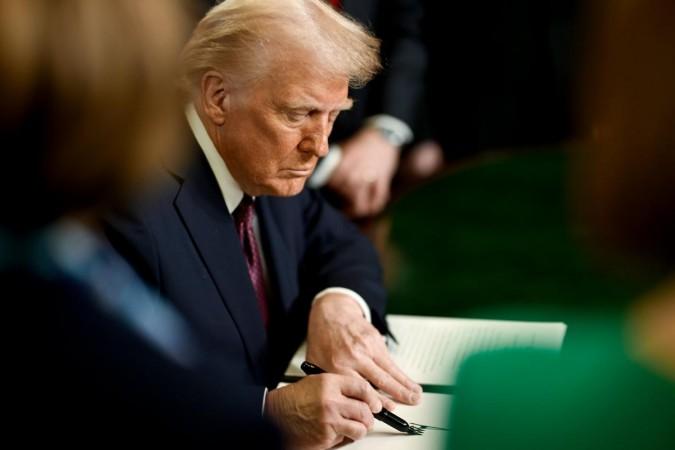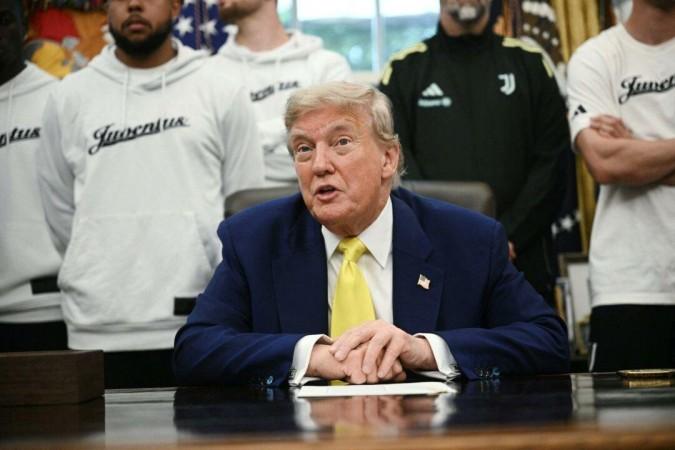
In a significant development that could alter the landscape of international trade, U.S. President Donald Trump has announced plans to send letters to various countries, informing them of new tariff rates. This initiative is part of a broader strategy to implement "reciprocal" tariffs, designed to match the tariffs that other nations impose on U.S. goods. The letters are expected to be dispatched over the next week and a half, although the timeline may be adjusted based on ongoing negotiations.
President Trump emphasized the flexibility of the tariff pause, stating, "We can do whatever we want. We could extend it. We could make it shorter." He expressed a preference for a shorter pause, indicating a desire to expedite the process by sending out letters that would inform countries of a 25 percent tariff rate. This move is part of a broader effort to renegotiate trade deals with key partners, including South Korea, which has been actively seeking to minimize the impact of these tariffs.

Treasury Secretary Scott Bessent has been actively involved in these negotiations, indicating that the administration aims to conclude trade talks with several countries by Labor Day on September 1. Bessent noted that there are 18 "important" trading partners, and the U.S. has already reached agreements with Britain and China. The goal is to finalize deals with 10 to 12 of these key partners, which would significantly advance the administration's trade agenda.
Trade Negotiations and Global Implications
The reciprocal tariffs, initially announced on April 2, include a 25 percent duty on South Korean goods. These tariffs were intended to mirror the tariffs imposed by other countries on U.S. exports. Although the tariffs took effect on April 9, President Trump paused their implementation for 90 days to allow for negotiations. This pause is set to expire on July 8, prompting countries like South Korea to seek a resolution before the deadline.
The broader context of these negotiations includes a complex web of international trade relations. For instance, the U.S. has recently terminated trade talks with Canada over a digital services tax that affects major American tech companies. This tax imposes a 3 percent levy on revenue generated from Canadian users, impacting companies like Amazon, Google, and Meta. The termination of these talks highlights the challenges of navigating trade agreements in a rapidly evolving digital economy.
In contrast, the U.S. has made progress in its trade relations with China. The two countries have moved closer to a comprehensive trade deal, building on an informal understanding reached in Geneva. This agreement includes provisions for China to supply rare earths to the U.S., while the U.S. will reduce its countermeasures. Commerce Secretary Howard Lutnick emphasized the significance of this agreement in stabilizing trade relations between the two economic giants.
Historical Context and Future Prospects
The administration's approach to trade has been characterized by a focus on securing "big, breakthrough deals" that require significant commitments from partner countries. However, experts like Rorry Daniels from the Asia Society Policy Institute suggest that an incremental, trust-building approach may be more effective in the long term. This perspective is particularly relevant in the context of U.S.-China relations, where a three-month negotiation period is considered short for addressing complex trade issues.
The impact of these trade policies extends beyond bilateral relations. For example, the European Union has welcomed the pause in tariffs as a step towards stabilizing the global economy. EU President Ursula von der Leyen has advocated for a zero-for-zero tariff agreement between the EU and the U.S., emphasizing that tariffs ultimately harm businesses and consumers.
Historically, the use of tariffs as a tool for economic leverage is not new. In the 1930s, the U.S. implemented the Smoot-Hawley Tariff, which raised duties on hundreds of imports. This move was intended to protect American industries during the Great Depression but ultimately led to a decline in international trade and exacerbated the economic downturn. The current administration's tariff strategy, while different in scope and intent, echoes the use of tariffs as a means of exerting economic pressure.
The administration's focus on reciprocal tariffs also reflects a broader trend towards protectionism in global trade. This trend has been fueled by concerns over trade imbalances and the perceived need to protect domestic industries. However, the potential for retaliatory measures from trading partners remains a significant risk, as seen in the ongoing tensions with Canada and the EU.
In conclusion, the U.S. administration's decision to send out tariff rate letters marks a pivotal moment in its trade policy. As countries await these letters, the outcome of ongoing negotiations will have far-reaching implications for international trade relations. The administration's approach, characterized by a mix of assertiveness and flexibility, will be closely watched by global markets and policymakers. As the July 8 deadline approaches, the world will be watching to see how these developments unfold and what they mean for the future of global trade.








